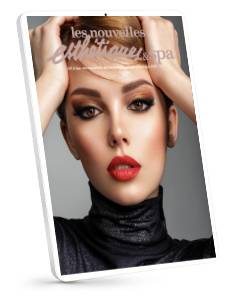Understanding and treating a disruption of the barrier function
Reactive skin can sometimes be confused for “sensitive skin”. Dermatologists debate that “sensitive skin” is a true condition and not just a symptom of a larger issue. The skin is the source of one of our largest senses – touch. Being the largest exposed organ – its job is to not only prevent irritants and bacteria from entering the body it is also to be sensitive and react to irritants. When skin reacts, it can appear in many different forms – stinging, redness, itchiness, acne, rosacea, or eczema. All these things are symptoms that signify that an ingredient, environment, or allergen has been sensed by the skin.
Skin Types and Reactivity
Reactive skin is typically found in your skin type. For example, skin type I are those who are very fair, have light eyes and have red or blonde hair. Clients with this skin type typically have “thinner skin” that leaves nerves and blood vessels closer to the surface of the epidermis. That is not to say that the darker skin types V and VI are not prone to reactive skin – it can just be harder to see physical indications outside of hyperpigmentation. Some medical conditions or treatments can cause the skin to be more reactive. For example, autoimmune disorders (lupus, psoriasis), fibromyalgia, rosacea, chemotherapy, and certain medications. These can cause the skin to become thinner, dehydrated, and the nerves to be overstimulated.
[ihc-hide-content ihc_mb_type=”show” ihc_mb_who=”2,4,6,7,5″ ihc_mb_template=”3″ ]
Disruption of the Skin’s Barrier Function
Another causation of reactive skin is a disruption of the barrier function. The skin’s barrier function is key in preventing reactivity and the treatment protocol for reactive skin is restoring this barrier. This barrier is an intercellular blend of fats that fill the spaces between the cells in the epidermis, preventing irritants from “getting through the cracks”. Once this balance has been disturbed, the skin can become reactive to ingredients by becoming chafed, red, experiencing stinging or burning sensations, and/or becoming inflamed. By restoring this barrier, it can help alleviate symptomology.
How to Treat Reactive Skin
There are four things that are key in treating reactive skin. The first is to look at the type of cleanser that is being used. Cleansers that have a higher pH or are stripping can cause the skin to be more reactive. Foaming washes tend to be more drying because they contain ingredients meant to remove or reduce oils. The main ingredient that causes the bubbles is sodium laurel sulfate. Squeaky clean isn’t always the best. Swapping out your surfactants to something that is milder, creamier, and fragrance- can calm the skin and help with moisture retention.
Secondly, avoid harsh exfoliants whether physical or chemical – so cutting back on retinol, exfoliating acids, or scrubs. Although these items are not bad when used on uncompromised skin, when your client has reactive skin, it can cause damaging inflammation. Exfoliating products speed up the skin’s natural cycle of shedding – which is where the lipid barrier is made and maintained. Chemical exfoliants work by breaking apart the glue that holds the dead cells to the epidermis. This can lead to a drying effect. Either halting the use of exfoliants entirely or reducing the frequency of when it is applied can help reduce the reactivity of the skin.
Once you have stopped removing moisture, it’s time to put it back in. Two powerhouse moisturizing ingredients that come to mind are ceramides and squalene. Ceramides are a lipid complex that mimics natural lipids the skin creates and fills the gap between the cells – in a sense it recreates the barrier until your skin can do it. Squalene is a naturally occurring lipid that makes up 10 to 12 percent of the skin’s natural oil mixture. It is a highly effective emollient that can lock in moisture and erase dry patches. Picking emollients that contain these substances can help replenish the lipid barrier and provide lasting moisturizing benefits.
The last one worth mentioning is avoiding environmental extremes – excessive sun exposure, wind, extreme temperatures, and heavily polluted areas. Be sure to properly protect the skin either with sunscreen or emollient products that contain antioxidants and other replenishing ingredients. Sunscreen should be at least a 30 SPF and be reapplied every 60 – 80 minutes. Heavier moisturizers should be applied in cold or windy conditions to reduce moisture loss.
Reactive skin is a sensitive thing to treat. It takes patience, time, and omission. By starting your client on a gentle, replenishing skin routine to calm the skin can alleviate the side effects of the reaction. It could take months to help the skin recover and trial and error but hopefully, this article helps put you in the right direction to know in which direction to take your treatment.
[/ihc-hide-content]













